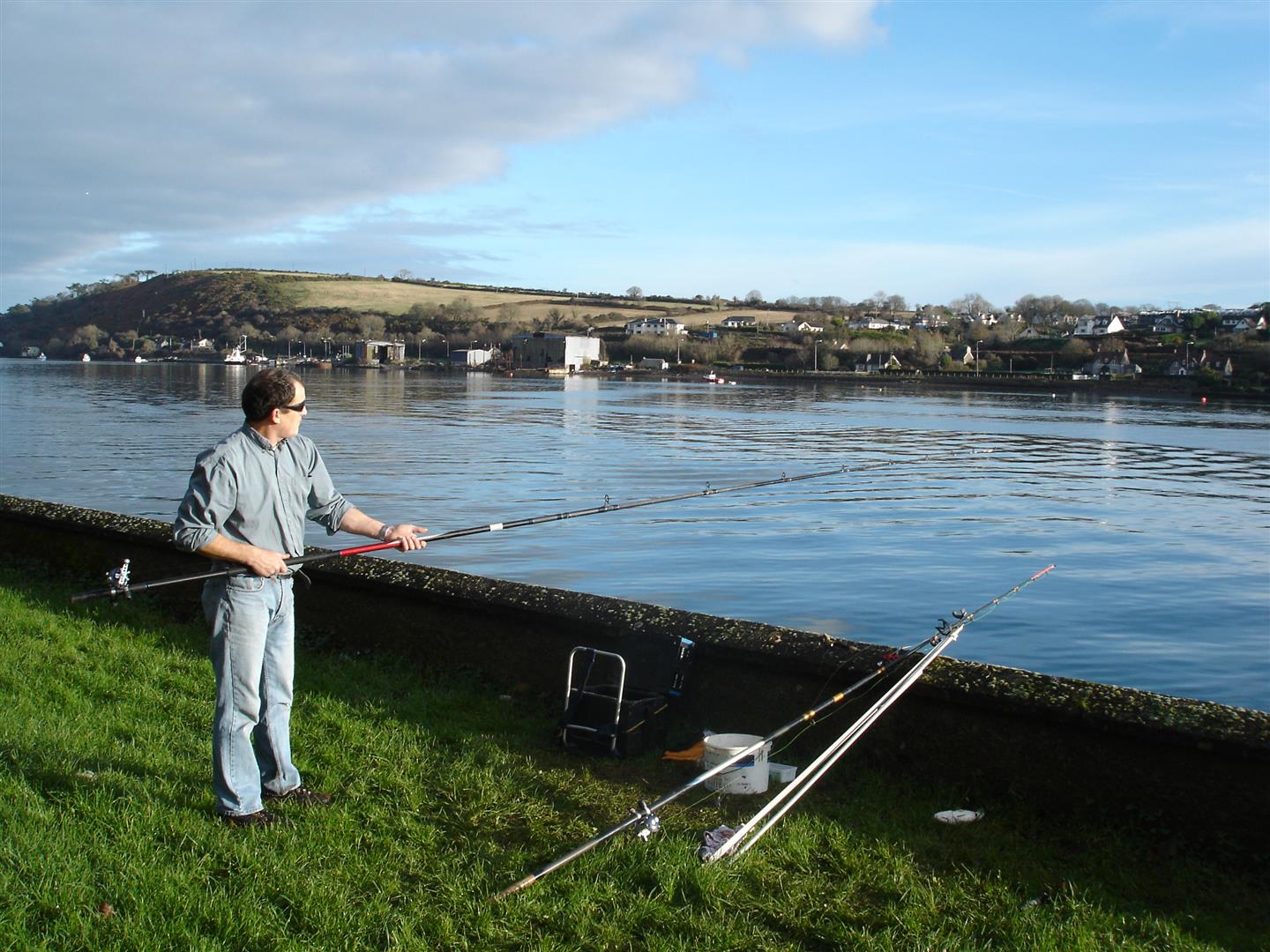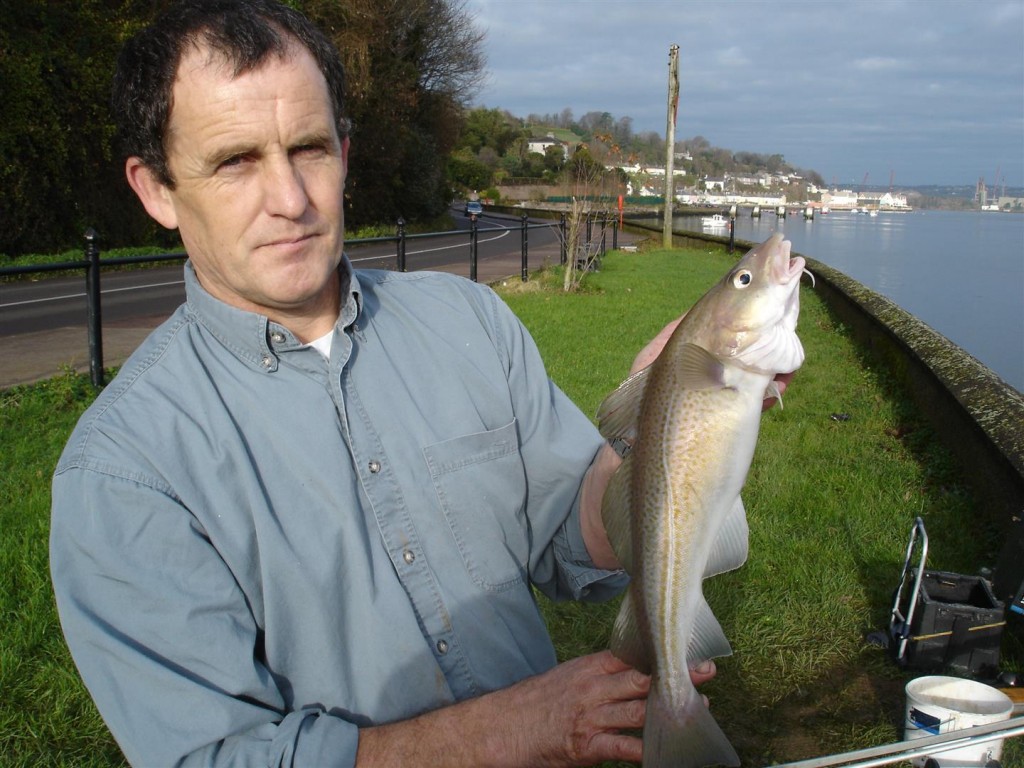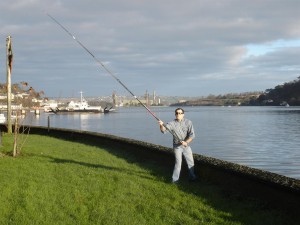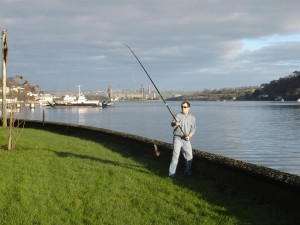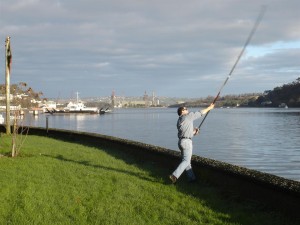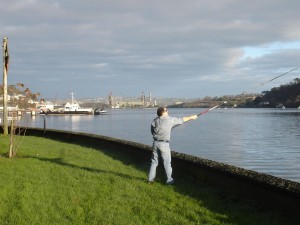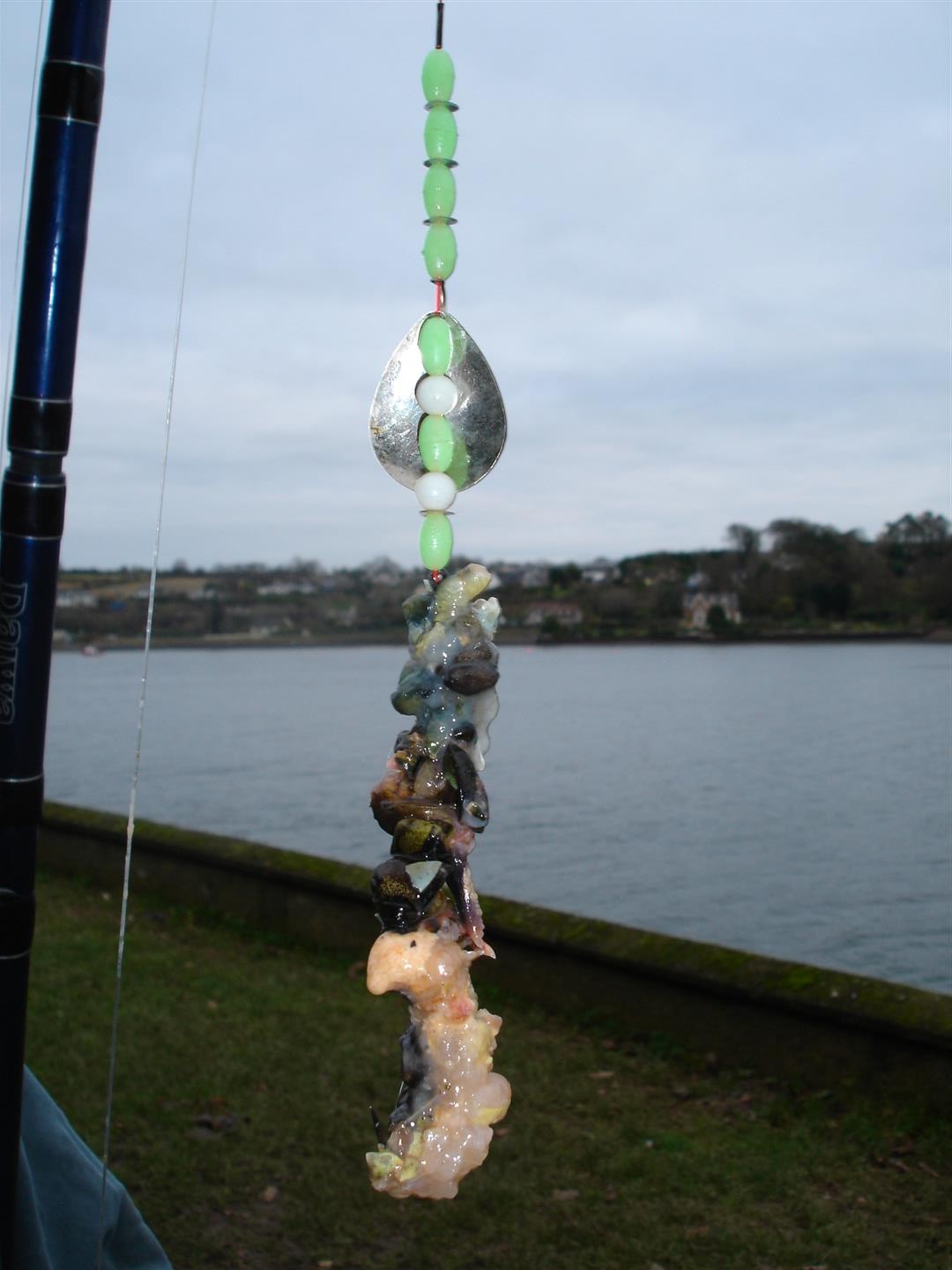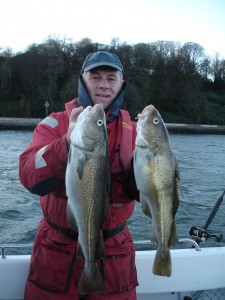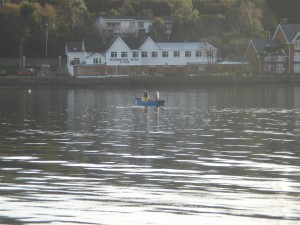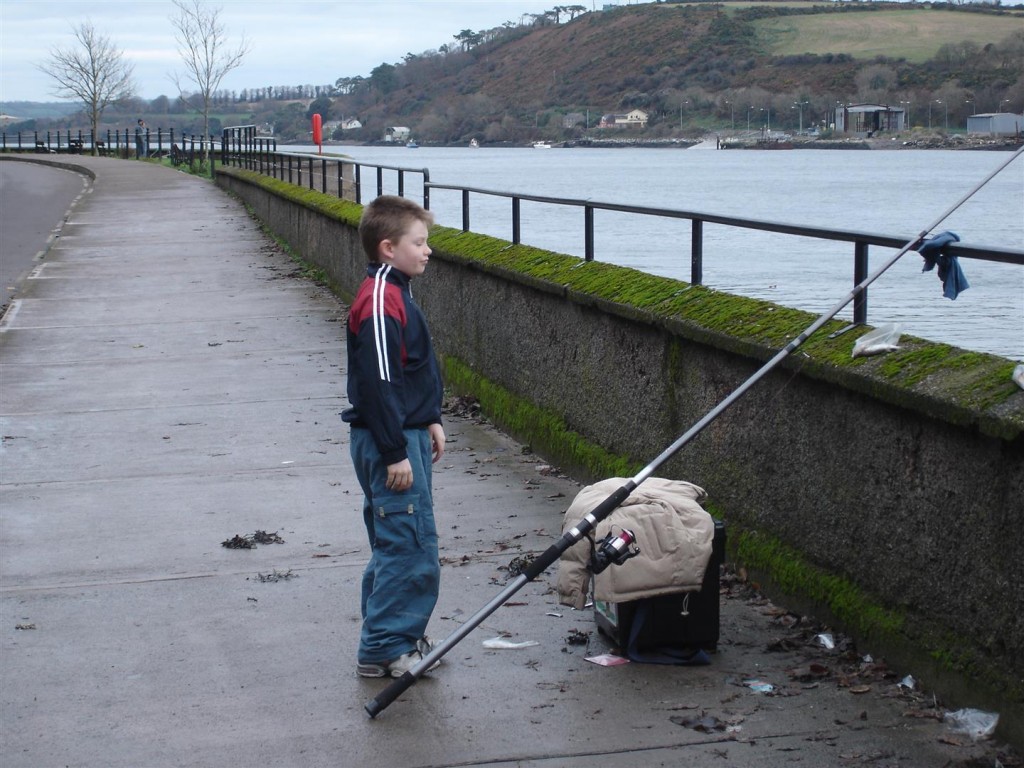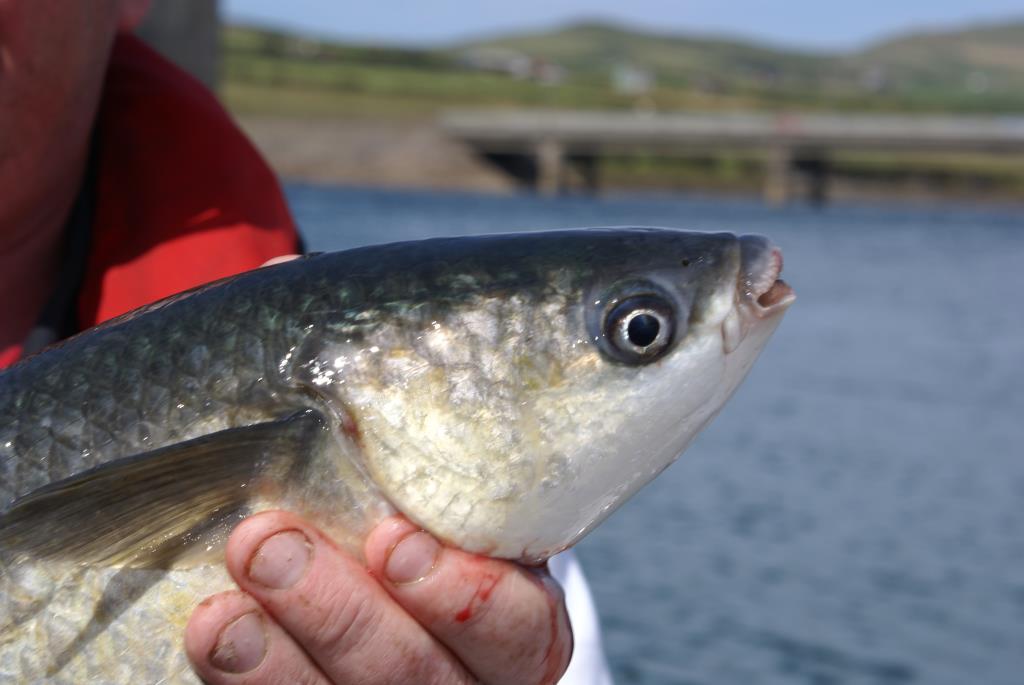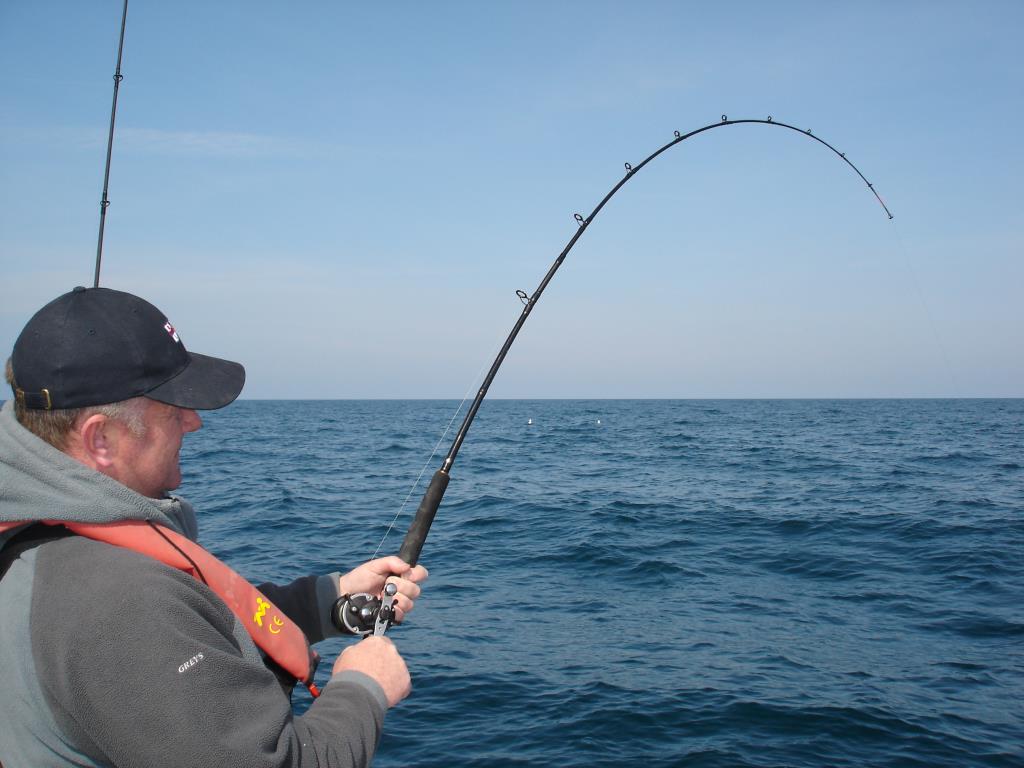*Throwback – “De Wall” at Monkstown – Cork Cod from the Shore
Think of dark winter days, long winter nights, cold winds, driving rain, ah yes this is winter fishing. Is the glass half full or half empty? Think of bright crisp sunny winter mornings, still, flat calm seas, wrapped up snug as a bug with a mug of tea in the hand, now this is winter fishing
I have yet to meet the angler who doesn’t like to catch cod. As a boat angler I’ve seen my fair share of cod and there is something magical about seeing that golden green flank coming to the side of the boat. In winter cod frequent our shores in some numbers and are the mainstay of angling through the coldest months of the year.
Cod grow to huge sizes but it is not always feasible to get to the places where these giants reside. Anyway, size is relative. What would be considered a small fish from a wreck, in summer, now becomes a prized catch. A cod over six pounds is worth its weight in gold during the months of November through March, especially from shore.
We have sung the praises of Cork Harbour, as a venue for the dinghy angler, for years. To a large extent we tend to forget that the harbour is a superb location for shore anglers too. I suppose I have fished less and less from the shore over the last few years. The fact that we now launch SKUA all year round means that my shore angling is limited to summer evenings, plugging for bass. Also, l must admit, my casting is not up to the huge distances required to hit certain marks!
The wall at Monkstown, or “De Wall” as it is locally known, has become a place of pilgrimage for shore anglers. It is to the shore angler what Lourdes is to the religious! Anglers come from all over the country to sample shore angling at its best. While it might not have the charm of a secluded storm beach with big surf sweeping in, leaving a carpet of white foam, it has what anglers dream of and that’s cod. I’m not talking pin codling, two or three to a session; I’m talking bags full of prime codling averaging three pounds. Each season anglers take a handful of near double figure fish from this mark. You can keep your secluded wave washed strand, fishing is fishing and the object of the exercise is to catch fish.
It would appear that cod pass through the mouth of the harbour and travel up river in an annual orgy of feeding. Many stay around the Turbot Bank area of the harbour and many cruise up the entry channels, passing Cobh, in order to feed in the area bordered by “De Wall”. I know I’m at risk of sounding like a broken record here, or a whinger, but it is a wonder that cod make it that far up river at all. They must first dodge the many gill nets outside the harbour and run the gauntlet of trawlers operating within the harbour itself. Finally the thing that takes the biscuit; they are harassed by gill netters while in the river and the inshore trawlers have started to trawl the river when they get wind that shore anglers are catching fish. Can the intensive trawling of the harbour, which is a proven nursery area, do anything else but deplete already threatened stocks? Ultimately depriving the area of much needed tourist revenue, and depriving ordinary hard working blokes of some much needed recreation and sport. Oh for someone with the political will.
When I’m not fishing myself, there is nothing I like more than to watch others. I like to see what traces and baits are doing the catching. I love the complex ballet that makes up a big cast. I often drive by Monkstown just to see if there is any action. I love the good-natured banter between anglers intent on reaping the reward of a few cod for the pan. Probably the most experienced and consistent shore angler that I know happens to be an expert at fishing Monkstown Wall.
I meet up with Donal Domeney at “De Wall” on a beautiful winters morning. Conditions are ideal. It is just high water and Donal is excited by the tide. It is his preferred slack tide, which gives maximum fishing time for the session. He rapidly baits up his weapon of choice a Diawa TDXS133 beachcaster paired with an Abu 6500 Sports Mag mounted incredibly low on the blank. The reel is loaded with braid. His terminal tackle is a single hook pulley rig.
“It’s all about distance and bait here” says Donal as he winds up for the first cast of the day. He has baited up with a juicy piece of crab whipped with elastic and tipped with a small lugworm. The whole rig is clipped down in order to maximise distance. He launches the rig with venom, out to the mid channel area. The cast seems to go on forever and I barely see the splash.
Donal sets about tackling his second rod, a Diawa Supercast STX. Before he has time to cast this rod he gets a bite on his first rod. “Braid allows the feel of every bite”, he strikes and within minutes a cod of about three pounds comes to the wall.
Eventually Donal gets both rods in the water and what follows can only be described as a frenzy of activity. He only has enough time to bait up and cast one rod when he has a fish on the other. Cod after cod come to the wall interrupted by the odd whiting.
There are other anglers present as well. I see a few cod being landed but its plain to see that greater casting distance is yielding more fish. In the space of two hours Donal lands 12 cod to 4lb and a half a dozen whiting. In fact, I think he retrieved only three times without a fish! I know many East Coast anglers who would sell their grannies for fishing like this. Donal says the run of cod begins in late October and lasts right through the winter and into early March. Some weeks are better than others; “Best to keep an eye on the forums on websites like sea-angling-ireland.org for the latest catch reports.” The session has whetted my appetite. I know I can never match the casting distances I have seen. There’s only one thing for it, take SKUA to the wall.
After seeing the results of a good shore session on the wall and because we do not relish going out to open sea, this Sunday morning, we head for Monkstown, where conditions are perfect. We are wrapped up well and the floatation suit is a must. The day is typical of this country’s winter conditions, biting northerly winds, sun hanging low in the sky. Soup and rolls replace fizzy drinks and chocolate.
It is a strange experience travelling up river rather than out to sea. We arrive at Monkstown before low water, to fish the area at the same state of tide that Donal chose, slack water. It is a difficult place to anchor. The ground seems to be covered with flat slate that will allow an anchor to hold for a time, but then break out. It is easy to see why the shore anglers are having success here, there being over seventy feet of water. The banks are lined with rocks and weed, surely a haven for crabs and small fish.
We had planned our tactics beforehand and decided to fish down tide during slack water and switch to uptide tactics at the start of the flood. I begin with a standard two-down ledger rig, spiced up with a sonar spoon. As usual the rods we choose suit the fish we hope to catch. We are using our favourite Diawa 8lb class rods.
We have an assortment of baits. Crab is in very short supply, due to the cold weather, so we make do with plentiful ragworm. I love ragworm as bait. It’s not bait that shore anglers can use easily, because it often falls off during long casts. From the boat this is not an issue.
Within ten minutes I have a bite. A poor cod is the result. During the period of slack water we are pestered by small whiting, undersize pouting, and poor cod. These fish appear to vacate the area as the tide picks up. It is at this stage that we catch our first cod, a nice fish of about two pounds. We continue to hit fish at regular intervals, the biggest cod going five pounds, a superb fish on a winter’s day, four miles from the open sea!
While fishing, I think of the shore anglers casting for all their worth towards the mid channel area that we occupy. I began to think of the different casting styles I had seen on the shore, the beautiful fluid movement of a “pendulum” cast and the white knuckle powering, “off the ground” cast. I then think of the crack offs! The thoughts of what damage a cracked off five ounce lead would do to SKUA, or us, has us wondering how safe our position is, but we fish on.
Strange, but one of the most important pieces of equipment on a bright winters day is a good pair of sunglasses. Because the sun is so low in the sky the rod tip can be almost invisible in the watery winter sunshine. By now the tide has begun to flood at a ferocious rate. The channel is quite narrow at this point and the subsequent venturi effect has the water passing under the boat at over five knots. When we can no longer hold with ten-ounce leads, we switch over to uptide tactics.
Though I’m not the greatest fan of uptiding, when faced with the prospect of using huge leads, I’m quite prepared to try anything. We continued to use our 8lb class rods. We replace our standard leads with 5oz. grip leads and follow the agreed rules; cast uptide, and upon contact with the bottom, leaving out a large amount of slack to allow a belly to form in the line. The rod tips bend nicely and the wait begins.
While uptiding, bites are not so dramatic. Most of the time the rod tip just straightens as the fish dislodges the grip lead. Striking is not necessary as the fish hook themselves. That said, as soon as I feel the nodding of a cod, I like to lift the rod tip in order to make sure the hook is well set.
We finish the session with a few more cod. It would be fair to say that uptiding allowed us to continue fishing, but we caught less fish and the thrill of the bite and strike is somewhat diminished. That said, in the run of tide, the fish gave fabulous fights and certainly were punching above their weights. In all, it is a splendid day’s fishing, intermingled with periods of relaxation and cups of piping hot soup.
Light fades early and we finish our day at what seems much too early an hour. We make the short dash to the slipway and retrieve SKUA. We’ve burnt all of €5.00 worth of juice. We’ve had another cracking day’s sport. A day’s angling like this makes you feel as if you’ve cheated winter and made it a little shorter.





